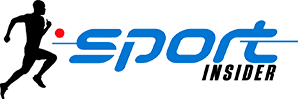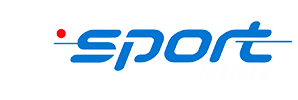NCAA Sports activities have formally modified as we all know them. On June 6 district choose Claudia Wilken accepted a settlement between the NCAA and its conferences and a bevy of attorneys representing all D1 athletes. The anticipated settlement ends three federal antitrust lawsuits, most notably Home vs. NCAA, which acknowledged the non-profit group that regulates collegiate athletics violated federal antitrust legislation by limiting the potential incomes energy of the student-athletes.
What The Settlement Means
• Faculties that choose in to take part will straight pay its athletes a income share of as much as 22 % of the typical energy convention ticket, sponsor and media deal income, with 20.5 million the variety of the preliminary annual cap. That annual cap quantity is predicted to extend yearly over the 10-year deal. This income is along with the income related to scholarship advantages.
• The NCAA pays roughly $2.8 billion in again damages over the following decade to NCAA pupil athletes who competed between 2016 by the current. After all, the following query media, mother and father and previous athletes have is, “when do the funds start?” As of now, there is no such thing as a public date. The awarded damages possible might be delayed if the settlement phrases are appealed to the Ninth Circuit U.S. Court docket of Appeals.
• There are now not scholarship limits, which suggests collaborating schools can supply a better variety of full or partial scholarships to athletes. Faculties can supply as many scholarships as they deem mandatory, offered they don’t exceed the brand new established roster limits in every explicit sport. For the principle revenue-generating sports activities, soccer groups have a roster restrict of 105 gamers, whereas in males’s basketball the quantity is 15 gamers.
• Identify, Picture, Likeness (NIL) Offers that athletes signal that exceed $600 face impartial evaluation by the “NIL Go” clearinghouse, which is separate from the NCAA’s enforcement division. That third get together entity is trying to make use of a good market worth algorithm to create what they decide to be respectable compensation ranges for particular NIL offers. In line with the settlement, athletes have 30 days to report any NIL deal they ink and it have to be for a decided “legitimate enterprise” objective.
Ballislife Evaluation
There have been a plethora of lawsuits towards the NCAA on antitrust grounds for the reason that group applied NIL reform on July 1, 2021 on account of the passing of the The Truthful Pay to Play Act (initially referred to as California Senate Invoice 206) which went into legislation on September 1, 2021. It acknowledged beneath California legislation that faculty athletes have been allowed to amass endorsements and sponsorships whereas nonetheless sustaining their athletic eligibility. That legislation and different NIL associated legal guidelines that went into impact in different states shortly thereafter restricted the NCAA’s enforcement of its personal mundane bylaws.
NCAA laws had no enamel at that time and NIL legal guidelines across the nation led to NIL serving as a proxy for play to pay and roster attainment, versus legit enterprise proposals. The NIL period led to the creation of collectives and an unregulated marketplace for compensating gamers as a way to retain their providers as athletes. Pay to play is meant to be towards NCAA bylaws.
This settlement helps the NCAA in what might ultimately be a fruitful or futile try (relying on how one feels about paying gamers) to strengthen its insurance policies and bylaws. The settlement is an try to regain management by the group that was earlier discovered to be out-of-line with antitrust legislation. The NCAA is hoping that is the stepping stone to Congress granting it an antitrust exemption as a way to assert extra management with limits on participant compensation and athletic transfers.
That transfer stays to be seen.
The Home vs. NCAA settlement is proscribed in scope in phrases to future authorized challenges beneath Title IX, state NIL legislation and federal and state employment and labor legal guidelines, which weren’t addressed by the settlement or by Wilken.
It’s not arduous to see the 20.5 million per yr rev share will face Title IX lawsuits, because the overwhelming majority of the income is predicted to go to soccer and males’s basketball gamers, in most situations. The rev share deal might even have a significant adverse affect on non-rev and Olympic Sports activities, and the leaders in these sports activities are asking for Congressional intervention to aide and shield these sports activities.
A 3rd get together figuring out the legitimacy of a NIL deal might additionally face authorized challenges. If the NCAA enforcement employees couldn’t get it proper, why would anybody be assured a 3rd get together will?
Ramogi Huma, the manager director of the Nationwide School Gamers Affiliation (NCPA), a nonprofit advocacy group he launched within the late Nineteen Nineties together with different UCLA soccer gamers, believes in lots of respects athletes as soon as once more acquired the quick finish of the stick on this settlement. Huma, who was instrumental in lobbying California Senate Invoice 206 in entrance of legislators in Sacramento, believes there are nonetheless tons of authorized hurdles within the settlements’ implementation due to present NIL legal guidelines in numerous states, amongst different points.
“Paying athletes is lengthy overdue and the NCPA is proud to be spearheading a motion to this objective,” Huma informed Ballislife. “Nonetheless, this settlement doesn’t deal with athletes pretty. Direct pay was already right here due to the numerous states dashing to make sure NIL. As well as, NIL collectives and colleges can straight pay gamers with none NCAA or convention interference. Briefly, athletes didn’t want the settlement to receives a commission by their universities.
“Sadly, the NCAA and conferences are in search of to make use of the settlement to primarily shut the door on an estimated $2 billion that NIL collectives are set to pay athletes. Many state NIL legal guidelines prohibit the colleges, conferences, and the NCAA from imposing NIL restrictions described within the settlement. So the settlement is actually unworkable. Due to the authorized legal responsibility concerned and the truth that many states gained’t enable such NIL restrictions, I count on universities to in the end ignore the settlement, pay gamers as a lot as they need, and proceed encouraging their NIL collectives to pay as nicely. Those that don’t might be at a extreme athlete recruiting and retention drawback.”
Ronnie Flores is the nationwide Grassroots editor of Ballislife.com. He might be reached at [email protected]. Do not forget to comply with him on Twitter: @RonMFlores
















